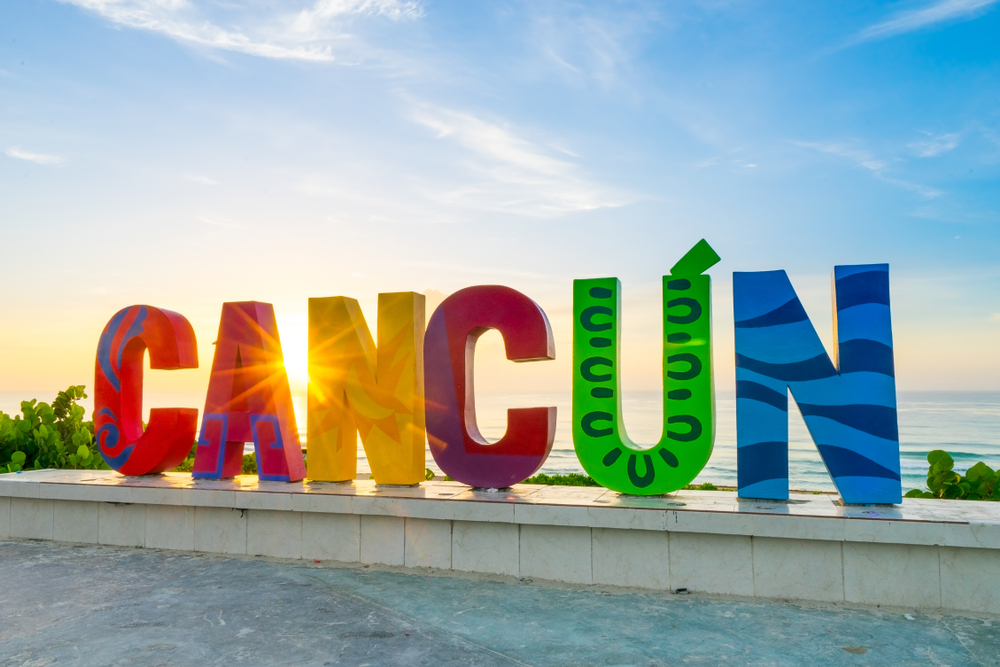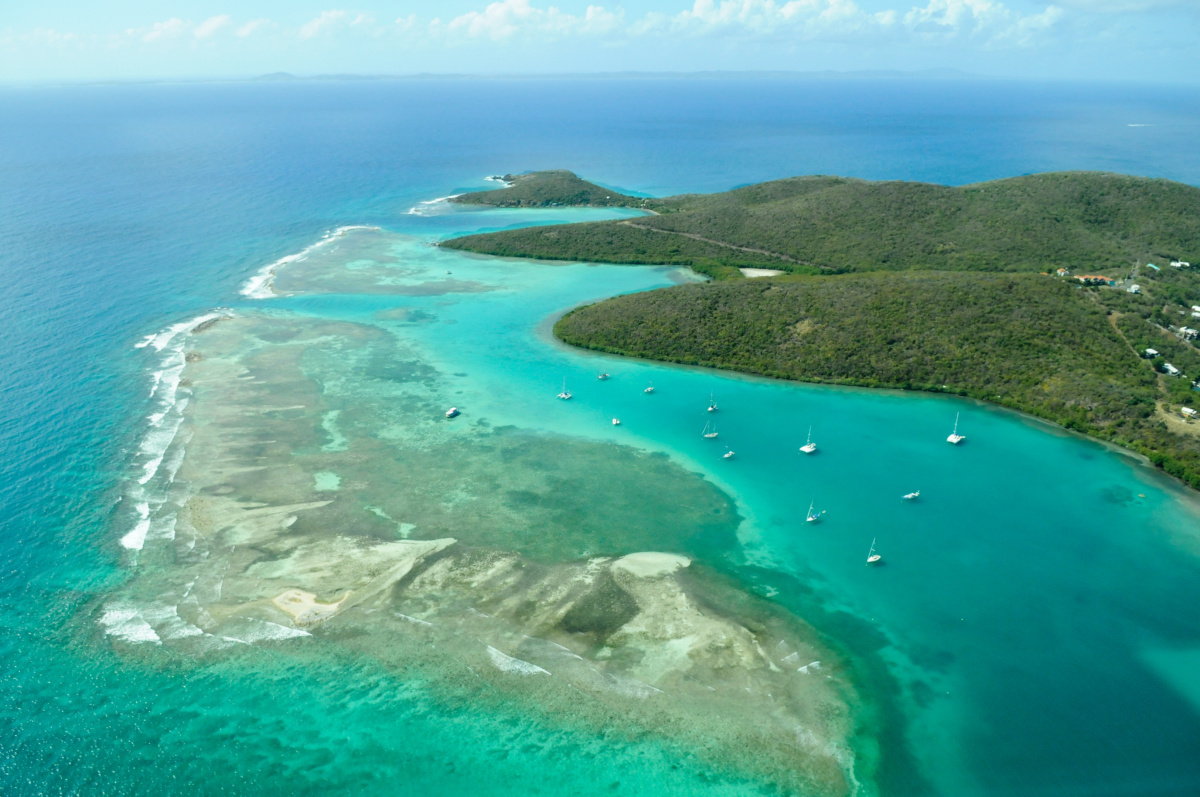‘Can you drive to Alaska from the United States?’ is a common question among travel enthusiasts. As someone who has driven there and back, I can say that it’s totally possible.
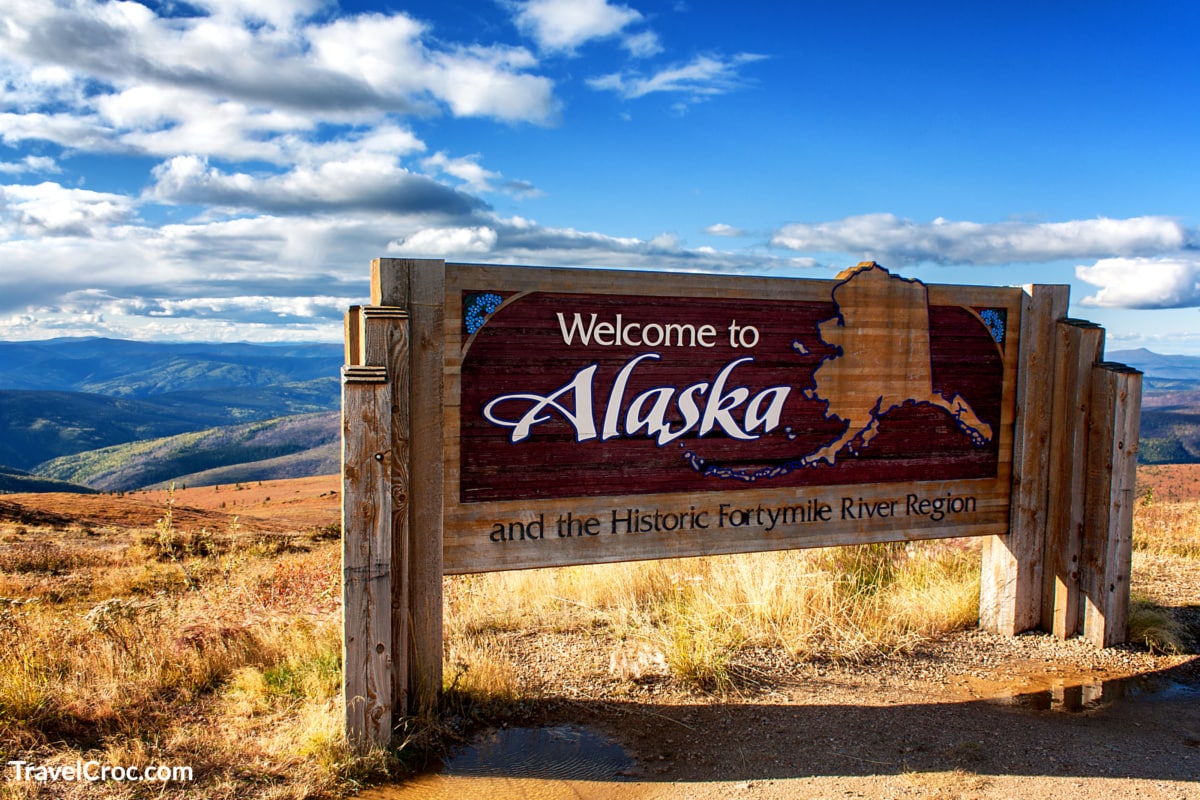
In fact, people from all across the US except Hawaii can drive to this beautiful state through the Alaska Highway. The journey is long but it offers many interesting things and natural beauties to see.
After all, some of the most wonderful and exciting state and national parks are situated along the 1.387-mile highway.
While in the past it was bumpy to drive on, now it’s modern and smooth for all drivers. Sometimes there may be some maintenance delays, but overall they don’t interrupt the journey for long.
Still, you can interrupt it willingly to stop by some of the numerous gas stations, motels, and similar. I really liked this freedom to enjoy the drive to the fullest without rushing.
So, are you ready to learn all the details about driving to Alaska from the US? Then, stay here and read on. I’ll share everything you must know.
Should You Drive To Alaska?
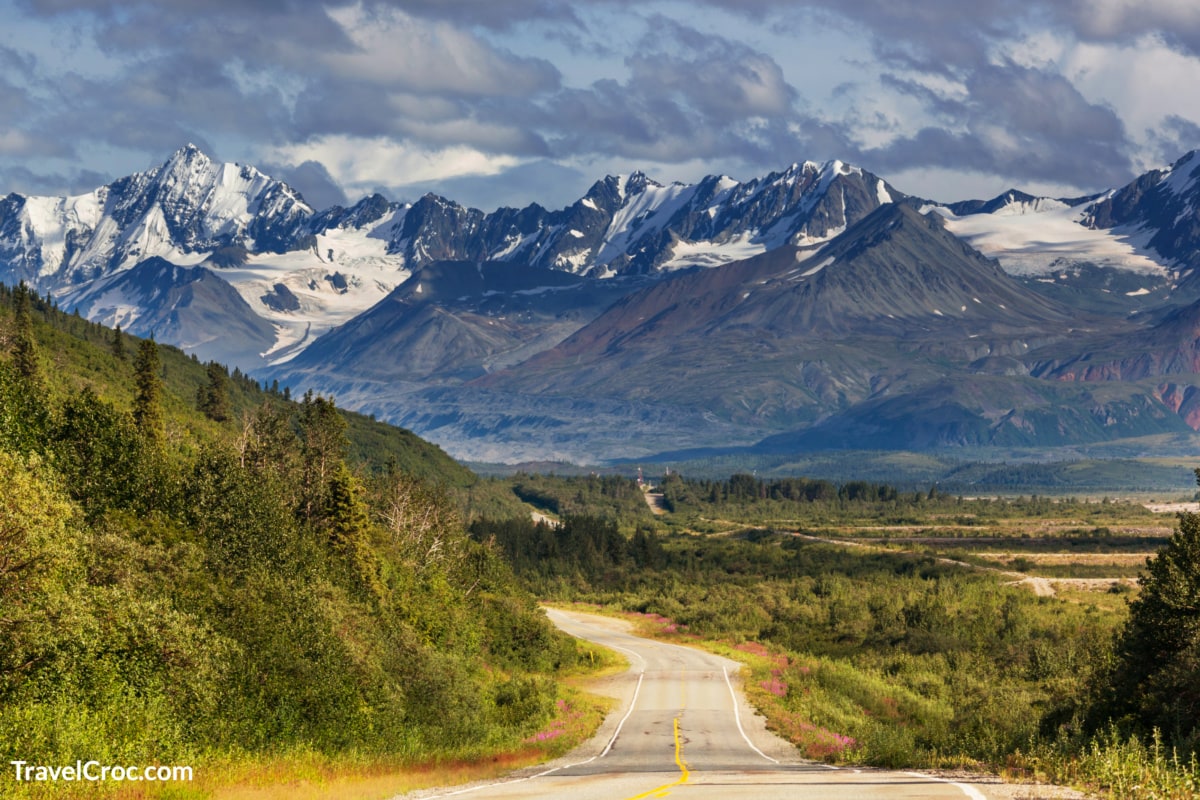
First things first. Before embarking on this journey, many people ask themselves whether it’s worth it to drive to Alaska. If you ask me, it’s absolutely an interesting experience filled with many possibilities for adventure.
I was a bit scared that the drive will be hard and I should prepare for it a lot. But in reality, it turned out to be way easier and I had a lot of fun both along the way and during my stay in Alaska.
Also, the whole trip was very scenic and it represented a road trip adventure by itself. Surrounded by mountains and forests, a big part of the road was a feast to the eyes. I think that if you plan a few stops to sleep and rest, you should have a great time no matter if you choose to go by car, an RV, or another vehicle.
Still, not every experience is the same so yours may be different than mine, especially considering the fact that this is a long journey. Therefore, I recommend asking yourself some questions.
Firstly, it’s important to distinguish whether road trips are your thing. Long hours in a vehicle aren’t fun for everybody. And it’s a fact that things may not always go to plan on these trips, so you should be ready to act accordingly.
Another related question is how you view the drive to Alaska itself. Do you consider it as a part of the whole journey to Alaska or do you just want it to pass quickly so that you can reach your final destination? If the latter is the case, the drive may be tougher to handle.
What’s more, the vehicle you plan to use plays an important role, as well. It’s recommended to go by car or an RV if you need a vehicle during your stay in Alaska. Since renting a car there tends to be expensive, this can be a nice idea.
Finally, you should consider how long you can stay in Alaska. For a longer trip of around a month it’s recommended to go with your own vehicle whereas for a shorter journey, you have the option to fly there and rent a car upon arrival.
When You Should Drive To Alaska
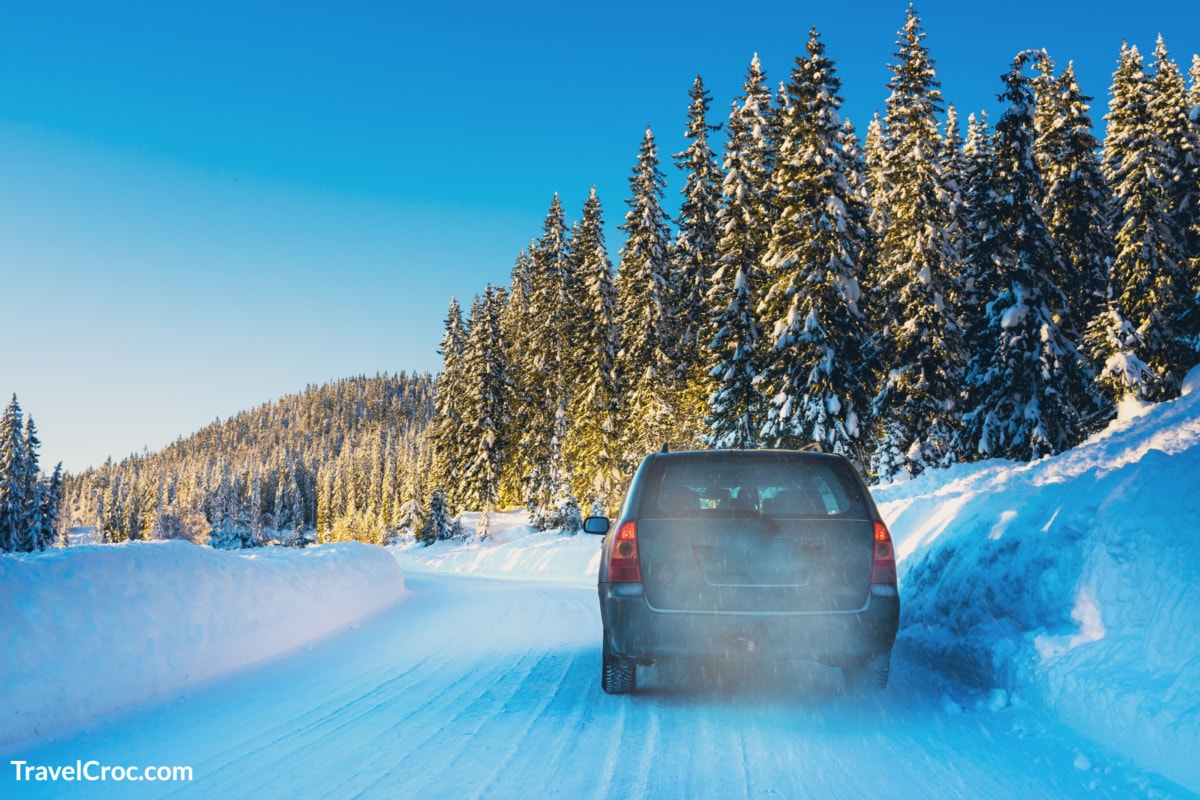
Once we established the answer to the question ‘can you drive to Alaska from the United States?’, it’s time to uncover when the best time to drive there is.
The good news is that the Alaska Highway is open throughout the whole year. However, you may encounter some longer delays during the winter months. Not to mention that many amenities aren’t open then due to the immense cold that is common for this part of the world.
In fact, the ice and snow tend to persist until May and then appear again in September. So, if you like to drive on a drier highway and in warmer weather, summer is the right season for you. Furthermore, during the summer period, the hotels and relaxing spots along the way are all open.
On the other hand, some disadvantages associated with driving to Alaska in summer are that sometimes there are construction activities on the highway and bugs are more intense.
Finally, those that want to see the Northern Lights should plan the trip for late summer or the beginning of fall. I can say that the sight is spectacular and one you will never forget.
Still, the decision of when to drive to Alaska is entirely up to you and your preferences.
Should You Pass Through Canada When You Drive To Alaska From The US?
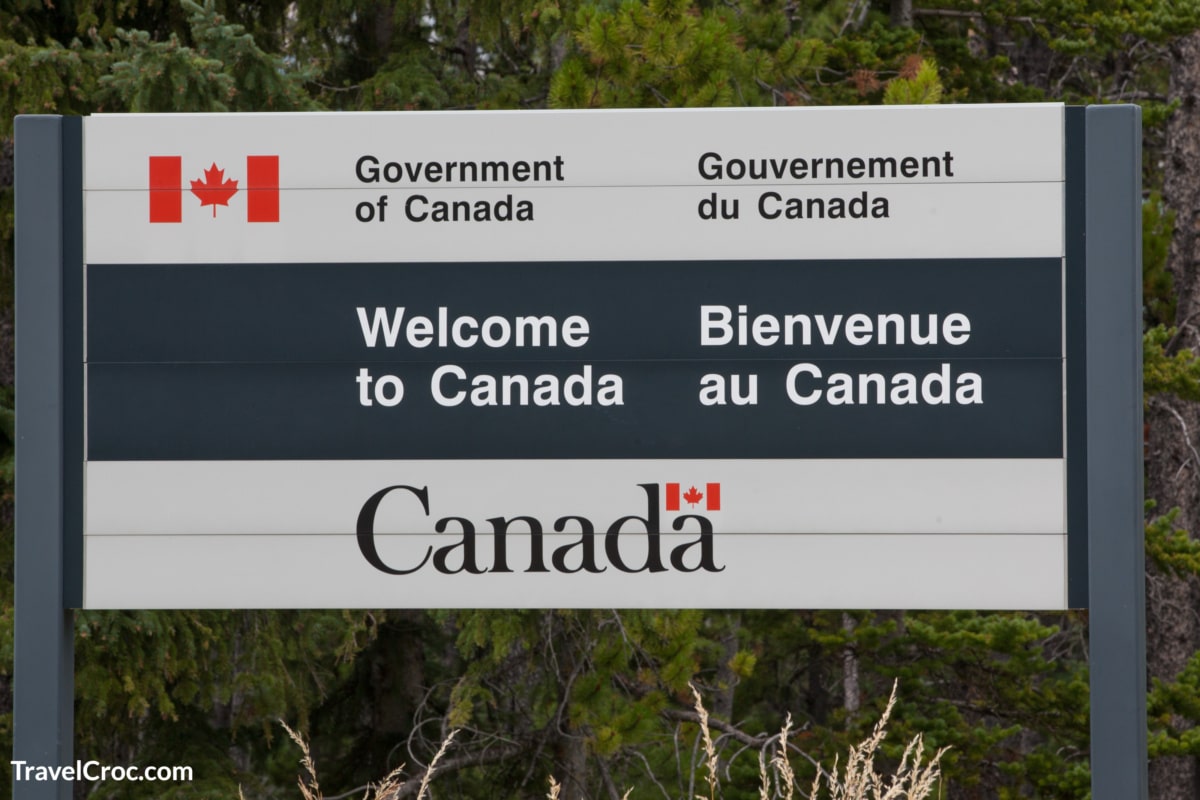
Yes. It’s mandatory to drive through Canada before reaching Alaska. Therefore, a large portion of your entire drive happens on Canadian territory. You pass Yukon, British Columbia, and Alberta if you travel from the east. I really enjoyed this because I got to see more of Canada and its beauties.
Since the travel rules of this country apply, it’s best to inform yourself beforehand and embark on the journey prepared. To give you a hand, I present some of the main rules and details that helped me during the trip:
- In Canada, people use the metric system. So, speed is measured in kilometers and when you put gasoline you should be mindful of the liters and not gallons.
- The rules in the country are very strict about carrying weapons, including sprays, alcohol, and similar. To evade any issues, make sure you verify your status with the Royal Canadian Mounted Police or don’t carry such things with you at all.
- There are still COVID-19 protocols in place, so do thorough research on those that are in place at the moment you embark on your journey.
- The time difference in Canada and Alaska is one hour.
- In Canada, people pay with Canadian dollars. Therefore, all prices are shown in this currency. To evade any mistakes, I went to the nearest ATM to get some Canadian dollars in cash. Another option is to use a debit or credit card. But some places may not accept those. Not to mention that some foreign transaction fees may apply.
Recommended Reading:
Do You Require A Passport To Drive To Alaska From The US?
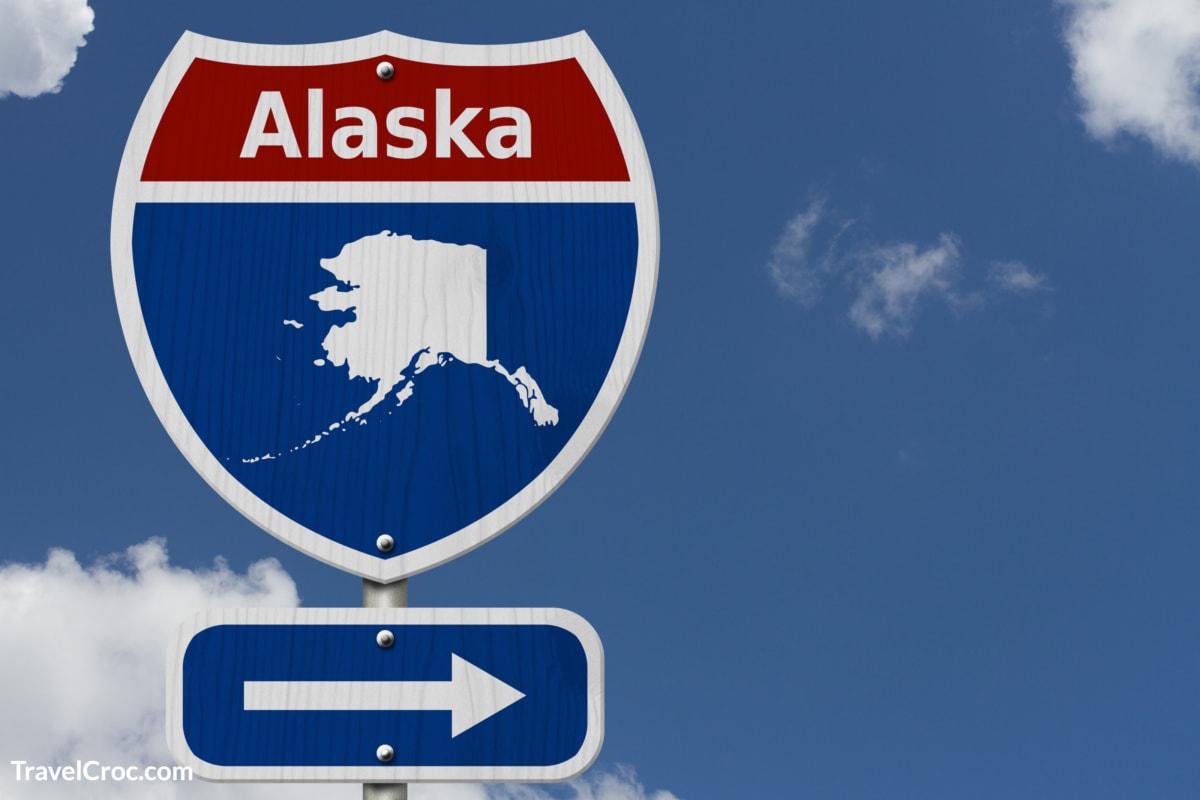
All US citizens need a passport in order to enter Canada and then reach Alaska. That’s why make sure you pack it at once.
Due to the pandemic and all the controls on the border, though, it’s advised to plan a longer delay at the border as a part of your trip. I waited for a few hours before I was granted entry to the country.
Another detail that may come in handy to you is that New York, Washington, Michigan, Minnesota, and Vermont residents can receive and utilize a special driver’s license in order to arrive in the country by car. In case you own a NEXUS pass, it works, as well.
How Long Is the Drive From The US To Alaska?
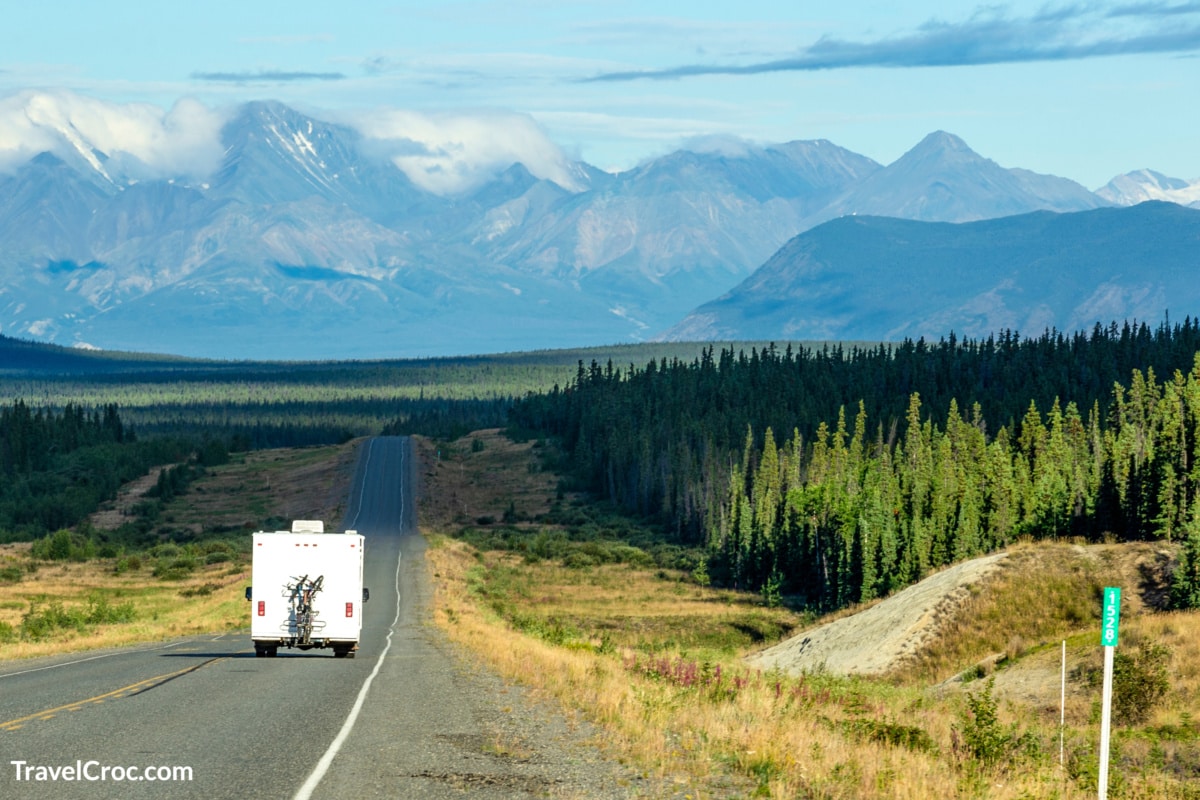
This largely depends on your starting point in the United States. Understandably, if you start the journey from places that are closer to the Canadian border, the drive will take less time and vice versa.
From Seattle, for instance, it’ll take you around a week to get to Alaska. It took me a couple of days longer with a few stops along the way.
Moreover, the drive through Canada usually lasts for about 33 hours and sometimes even more.
Like I mentioned earlier, it’s important to decide whether you consider the drive as a part of the whole journey or not. This is because it can be tougher to handle for those that don’t enjoy the drive. Therefore, for these people, it’s preferable to fly to Alaska instead of driving there.
Before embarking on the journey, I asked around and researched a lot about the length of the drive and why it may be longer than usual. Here are some of the key details I found:
- Construction and maintenance on the road can cause delays in your drive. In these zones, the wait can extend to a few hours.
- Weather conditions like frost, for one, are among the main reasons for delays. In fact, the construction activities on the Alaska Highway mainly happen due to the harsh weather and its effects on the road. Be careful as in some parts of the highway like those that pass through Yukon, Northern British Columbia, or Alaska frost heaves may appear out of nowhere. They pose a danger to your vehicle if they are hit at a high speed. So, be mindful of the speed limits and don’t drive too fast if you notice that the weather is getting very cold.
- The two lanes on the Alaska Highway sometimes lead to delays, as well. Especially in the summer period, there are many RVs and other similar vehicles that tend to drive slower. And it’s not always safe to pass them, so be patient and wait for a suitable time to do so.
- When you notice wildlife, you’ll surely want to take a pause to look at the lovely animals and even take some pictures. This can extend your drive a bit. But more importantly, you should follow the speed limits to evade possible collisions with wildlife that can be dangerous for both sides.
- Finally, the length of the drive also depends on how many stops you make along the way. There are many beautiful spots and attractions to see, so it’s a nice idea to visit them. Below we’ll go over some of them, so read on.
How Can You Prepare Your Vehicle For The Road Trip?
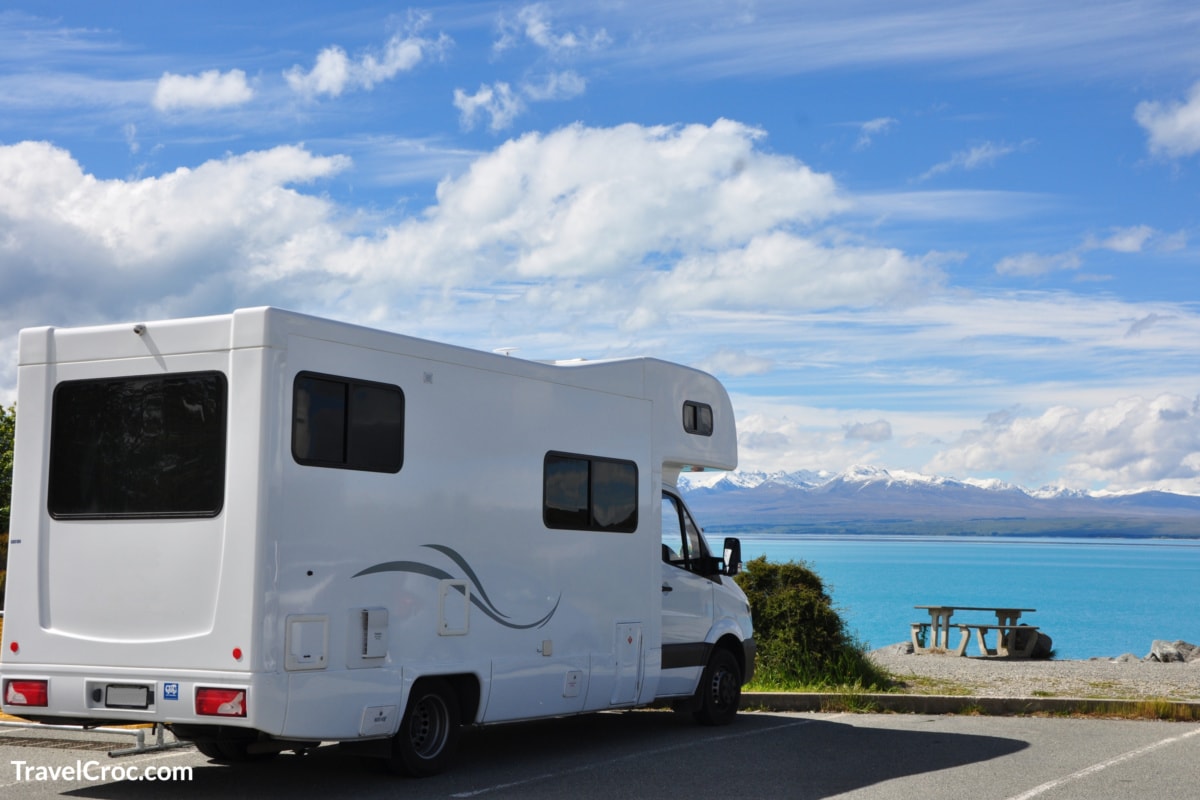
One of the first questions that people have, when they want to go on a road trip to Alaska, is if their vehicle can handle it. The truth is that any well-maintained and operating vehicle is capable of taking you to Alaska and back.
The specific capabilities like four-wheel or all-wheel drive, type (RV, motorcycle, or car) aren’t the most important things as long as you can rely on that vehicle.
Yes, the road trip is quite long. There may be plenty of distance between facilities and services, too. Yet, the road, itself, won’t be super demanding of your vehicle.
On the other hand, don’t expect it to go easy on your vehicle. Windshield dings, dents, paint chips, and more can happen to your car. That’s why taking a brand-new car, which you’ve just bought, on this road trip may not sound like the best idea out there.
Before I set off for Alaska, I remember that one of the very first things I did was check if my car insurance covers me in Canada. As we established, you can’t travel to Alaska without passing through Canada on the way.
Moreover, accidents – God forbid – can happen, so it’s best to be prepared for anything. Later when I was talking with my friends I was surprised to find out that not many people do this.
You shouldn’t forget to check all of the vehicle’s fluids. You can do an oil change, too. Speaking of liquids, make sure you make mental notes to fuel up when the opportunity presents itself.
My tip is not to look at the prices because it’s not like you’ll be able to get some fuel whenever you want on the road. If you feel like this can be an issue for you, you can take a gas can with you.
Tires are a vital part of the preparations that take place before your travel commences. Don’t forget to check out if they are in a top-notch state. If you find something is not quite right, don’t hesitate to purchase new ones.
This makes the world of difference in reducing the risk of ending up with a flat tire in the middle of nowhere in Canada or Alaska. Having a backup plan – and by that, I mean a full-size spare tire – can be extremely helpful.
Besides a spare tire, ensure that the suitable equipment is in the vehicle so that you can easily change it if needed. Refer to the vehicle’s manual for help in situations like these.
Not to sound like I’m scaring you but there are plenty of things that can go wrong. The car breaking down. Getting two flat tires. The battery isn’t working. First and foremost, you shouldn’t panic in these situations.
Yes, they are extremely stressful and nerve-ending. But, sometimes you should rely on strangers to help you. If you find yourself in an area covered by cell phone service, make sure you call for roadside assistance.
If not, wait for someone to stop by and bring some help. That’s why it’s important to carry some surplus food, beverages, and warm clothes in case you have to wait for a while.
These items can help you even when there are delays in road construction. You can read more about some useful items to have in your trunk for your journey below.
Recommended Reading:
What Is The Cost Of The Drive To Alaska?

How much money you spend on the trip is entirely up to you and your budget. The costs aren’t the same for everyone. They depend on the vehicle type and how much gas it requires as well as the places you intend to spend the night at and the exchange rate between the US and Canadian dollars.
Overall, you should be prepared to spend more money on gas in Canada. In remote areas in British Columbia, for instance, the prices can be 50% higher than in other places. So, make sure you incorporate enough funds for gas in your budget to prevent any issues on the road.
Connected to this, have in mind that in Canada, gas is measured in liters and you should pay with Canadian dollars. This can confuse Americans a bit, making it harder for them to calculate the amounts they are spending.
Other than gas, accommodation plays a big role when it comes to the cost of the journey. If you want to save some money, you should think about camping in the special areas meant for that.
Of course, you can make a combination and spend some nights in hotels. But incorporating camping at least for a few nights will lower the costs down.
Where In Alaska Can You Drive To?
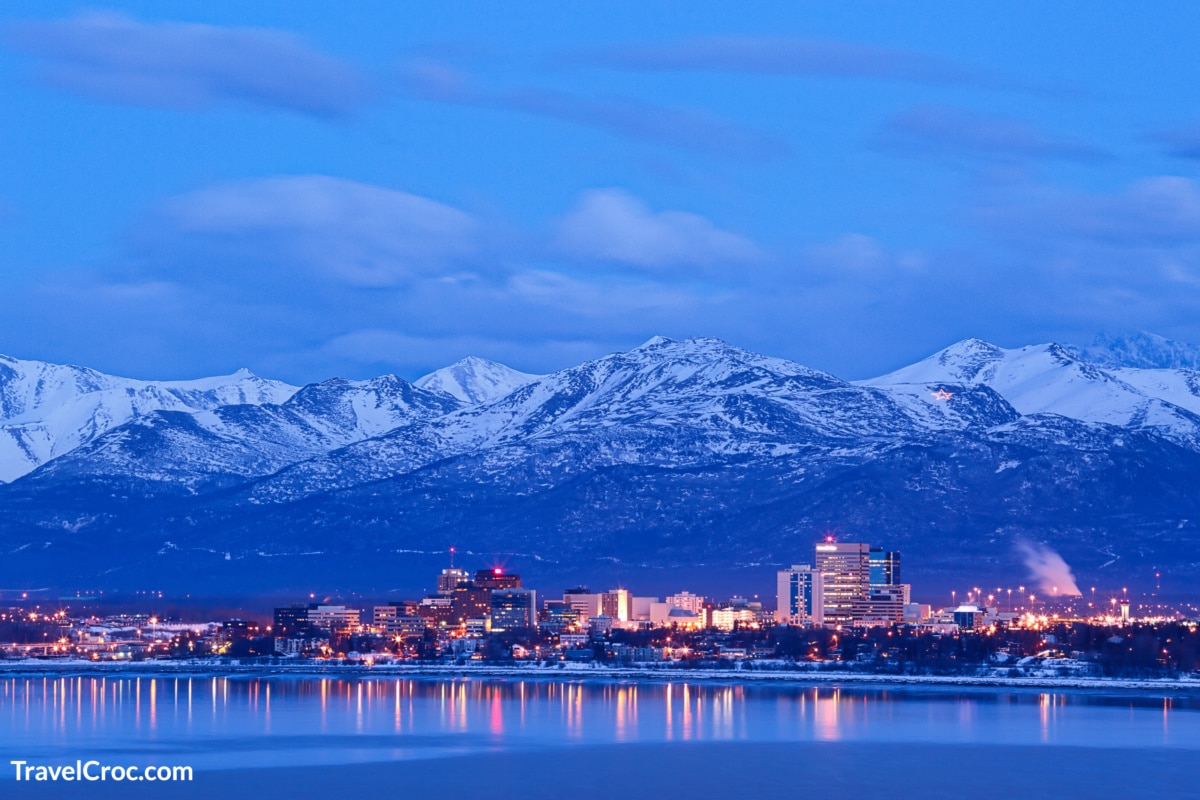
Basically, you can drive to all places in Alaska that are connected with a road. These include Fairbanks, Anchorage, and Denali National Park. On the other hand, you can get to some places that aren’t on the road system only by plane or a boat.
One of these places is the capital city of Alaska Juneau. It represents the only capital city in the States that people can’t drive to. However, this doesn’t mean that you can’t bring a car with you.
To be more precise, you can take a ferry and load your car on it. That way you’ll have it with you during your stay in the city, enabling you to move around more easily.
To get to the Alaska state ferry, you should drive to Haines or Skagway and then get on the ferry from there. Just have in mind that you should make a reservation for your vehicle beforehand.
Recommended Reading:
What Are the Conditions On The Road Like?
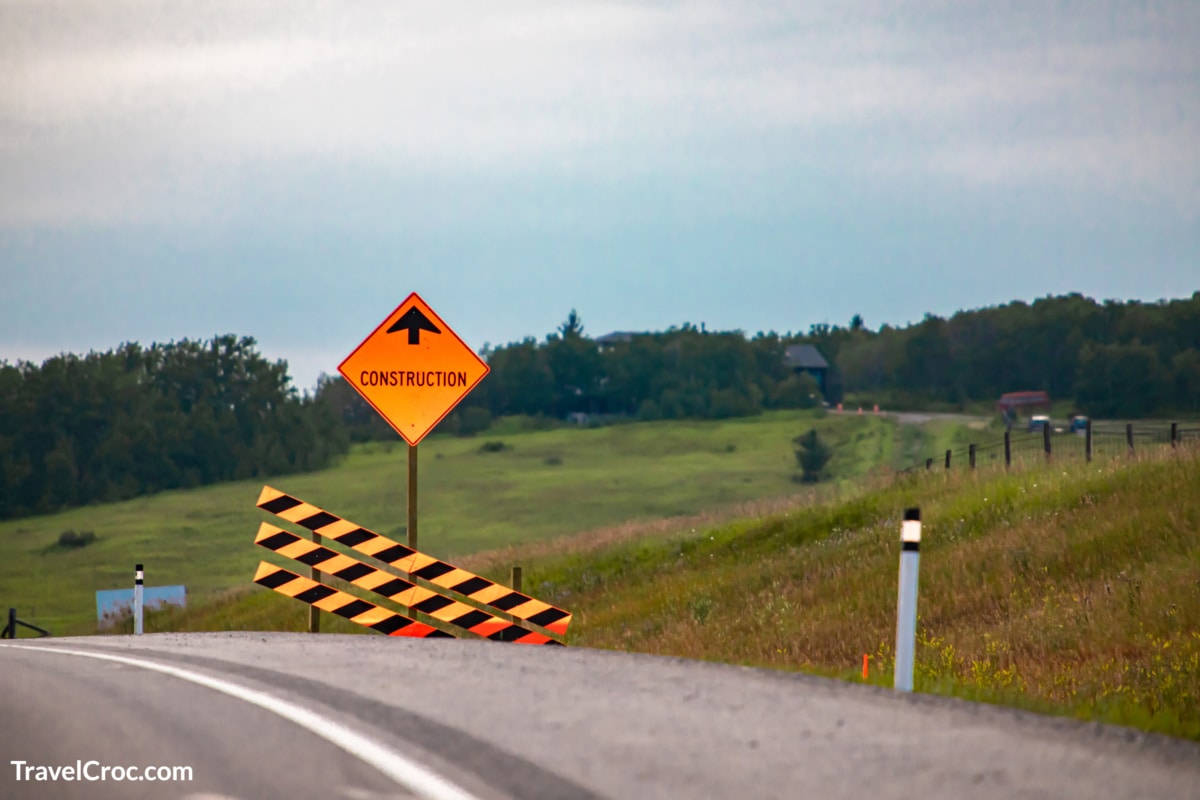
When I told my friends that I’m traveling to Alaska, they expressed concerns over the conditions on the road as well as the weather conditions. Luckily, my drive on the roads went without any issues or any delays.
In general, the Alaska Highway is well-maintained and paved. Even the smaller roads along the way are paved, as well. This largely improves the whole experience and makes the drive easier.
Understandably, there may be some gravel on the patches that have been recently repaired. Still, they are maintained well and you can drive through them without any trouble.
Having this in mind, gravel can extend for multiple miles in construction areas. There, a pilot car usually appears and you should wait some time for it to do its job.
Furthermore, potholes and frost heaves may appear before you. But in Canada, they are marked with orange signs to prevent possible damage to the car.
Another detail to be mindful of while driving on the roads is wildlife. Especially moose tend to show up from time to time, so you should be ready to adjust your speed to evade collision.
Aside from this, drivers have issues with fuel. Many of them drive for miles in search of cheaper fuel but the truth is that it can get more expensive as you go further.
Therefore, it’s advisable to stop in bigger cities to fill up the tank even if it’s partially full in order to be sure that you won’t run out of fuel in the middle of nowhere.
When it comes to weather conditions, you should be prepared for all scenarios. Specifically, if you’re driving in winter, there are many delays and dangers lurking from all sides.
For starters, the ice can make the roads slippery and more dangerous. Not to mention that as a result, you would have to adjust your speed and drive slower. Snowstorms and regular storms can also occur, making the roads impossible to drive on.
In such instances, you would have to stop driving and if there is a motel or hotel nearby to spend the night there or stay in the car until the storm passes.
Eventually, you should be aware that in winter the days are shorter, so you may need to drive in the dark for a whole day.
Because of all of these situations that may arise, my recommendation is to bring spare blankets, food, and gas cans with you in case you have to spend one or more nights in the car.
Also, winter equipment for the car like snow chains, wooden planks, and spades is a must.
Yet if you ask me, if you don’t have to travel to Alaska in winter, postpone the road trip adventure for the warmer months.
Will There Be Cell Phone Service While Driving To Alaska?
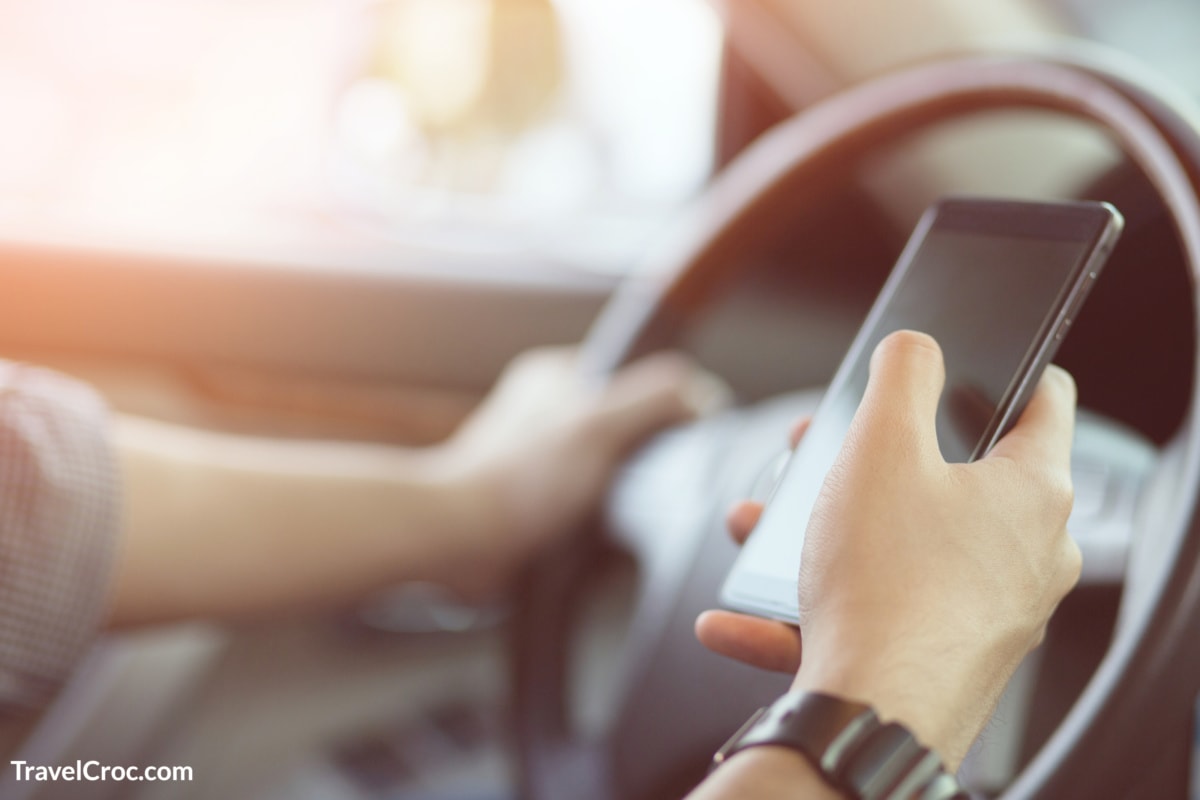
During the majority of the way to Alaska, you should be prepared not to have cell coverage, especially when you are driving outside of towns. Also, while driving through some small towns you may experience a loss of cell phone service.
Especially, when you’re driving in Canada’s British Columbia, the Yukon, and even when in Alaska. The northern parts of British Columbia can be exceptionally tricky when it comes to cell phone service.
One of the vital things to consider in this situation is that most of your driving will take place in Canada. That’s why it’s advisable to contact your cell phone provider.
Its agent or employee will share with you the price of using your phone in Canada as well as data charges. Some people may find this trivial, but these costs can be quite high.
As a result, it’s best if you know them firsthand so that you can plan them accordingly in your budget. I did the same before traveling to Canada and the provider informed me they won’t charge me roaming in neighboring Canada. This was apparently the case for Mexico, too.
A good thing to do is to check whether your provider offers some short-term international plans, which can sometimes be real lifesavers and can save you plenty of bucks.
What’s more, the provider will likely share with you some concrete locations where you can get some phone service on the road trip.
Now, if you’re Canadian or if you already live in Canada, you should still consult with your cell phone provider. Information like the price of cell coverage and spots where you can get it is essential and you shouldn’t overlook it.
My experience was absolutely better than I had previously expected. Yes, it was a bit problematic to get cell service in the north, but the cell service and data were okay in the small towns I passed through.
If you’re all on your own during this road trip, getting a satellite phone may sound like a reasonable idea. Their price has been increasing over the past period, but you won’t have trouble finding a good one at an affordable price.
Recommended Reading:
Where Can You Sleep During The Road Trip? (Accommodation + Camping)
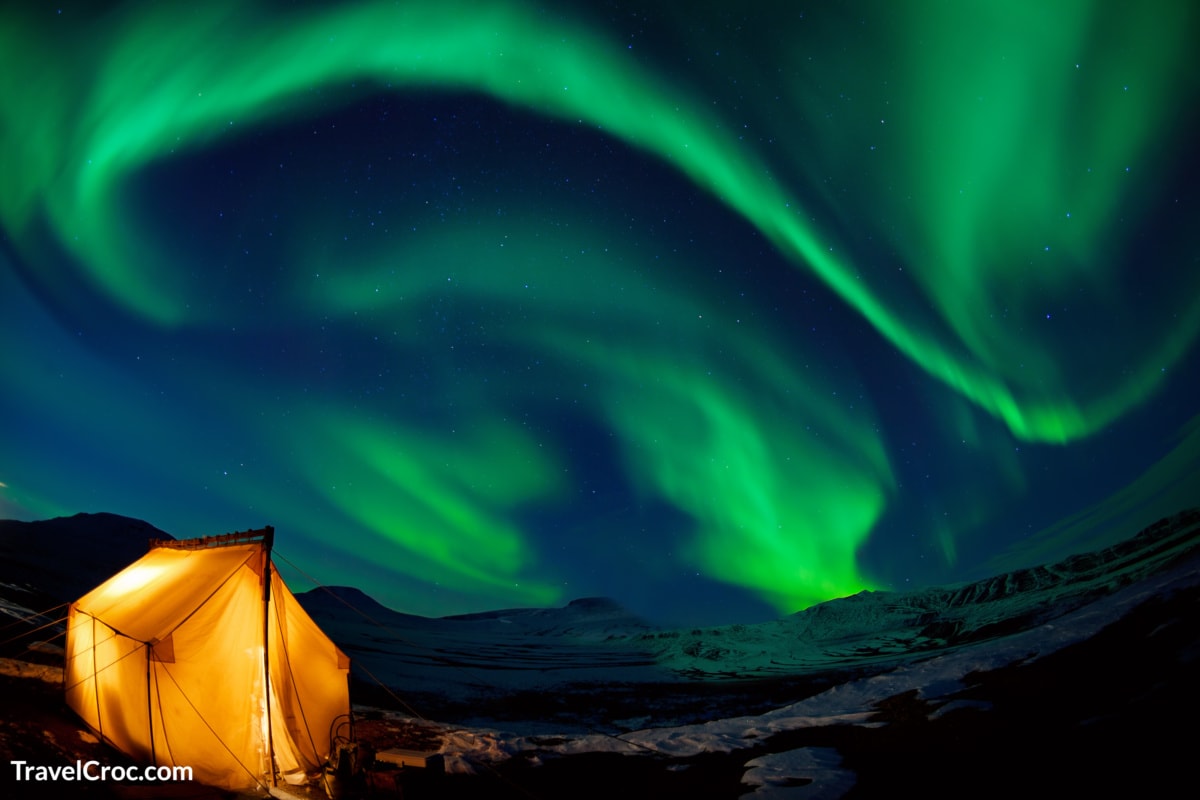
Obviously, it’s a long drive to Alaska. And as usual, you need some accommodation options to sleep for a while and recharge your batteries before you resume the road trip.
If you’re like me, you may want to schedule and plan the essentials before you embark on this journey to beautiful Alaska. (Of course, I leave some things to chance and for how I feel at the spurn of the moment).
What I mean by this is that I always want to know beforehand where I am going to stay during the road trip. So, I make reservations for lodging and similar to minimize the risks.
How much beforehand, you may ask. Sometimes, it’s fine if you call the place where you want to stay while you’re on the highway. So, around a day or two before you arrive may be more than enough. Don’t get me wrong – there is a high chance that you may find a place to sleep over even without a reservation.
But, reserving suitable accommodation may be more relaxing at the end of the day. You won’t have to think about it at the last minute or when it’s getting dark while you’re on the road.
While we’re speaking of that, don’t rely on having access to the internet all the time. As I said, there may be some blackout spots where you may not have cell phone service, not to mention any Wi-Fi.
From motels and fancy hotels to boat rentals, inns, and more, a myriad of options is at your disposal. What’s great about some of them is that they can offer some exciting facilities which you can ask about. By that I mean, pools, hot tubs, fitness centers, saunas, rooms with a view, and similar.
If popular hotel chains and vacation rentals are your things, then you can find plenty of those in (or near) larger towns along the Alaska Highway.
In this case, it’s a good idea to book a room in advance. That way you’ll be able to spend the night in a town and likely have access to cell phone service and internet. The latter may not be completely certain if the vacation rental or hotel is outside of a town.
For me, I’m always up for a blend of roadhouses and camping. I simply love camping – a) it’s the cheapest available option, and b) spending time in nature and under a night sky is irreplaceable for me.
On other hand, moving camp (setting it up and then putting it all back) along the Alaska Highway for several nights in a row can be more tiring.
Imagine spending hours on the road and then having to do extra work at night to set up the camp when all you want to do is lay down and get some quality sleep!
That’s why I like to mix it up with roadhouses. They also aren’t very expensive and I have found that each new roadhouse always gives me a unique experience.
Besides the affordability, I am a fan of camping because of the flexibility. Still, one of my first tips for camping is to stop early for the night. That way you can carefully get your spot and make yourself comfortable for the night.
There are a variety of state and provincial parks, recreational areas, and such where you can make camp. Additionally, some privately-owned campgrounds and camps for RVs allow tents and some offer laundry services and a shower.
There are a couple of considerations to have in mind. One of them is bears. Black and brown bears roam Alaska in big numbers, so you have to take this seriously.
Further, you should follow the local authorities’ rules and recommendations in effect. Have in mind that you shouldn’t run from bears nor approach them to feed them. Carrying a bear spray is advisable, too.
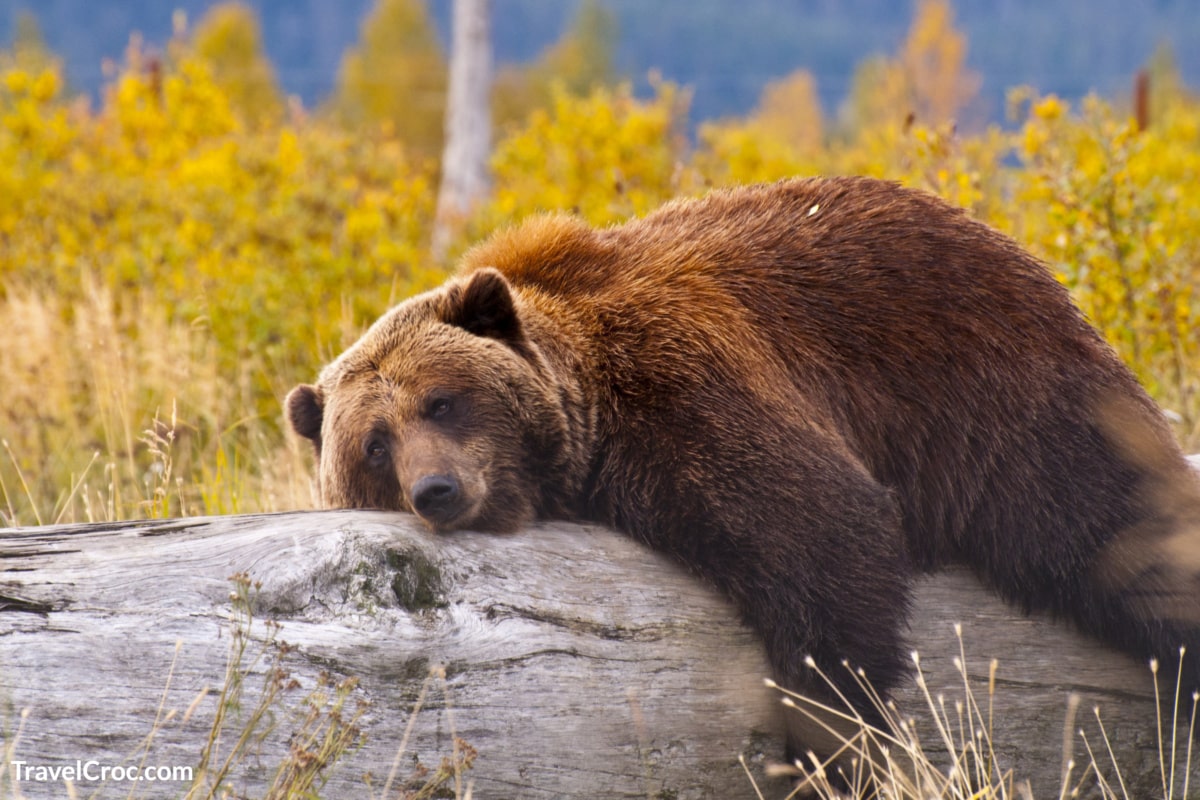
If you’re traveling in the summer, mosquitoes may especially be an issue. So, you can take some notes to bring full gear, bug sprays, and more to protect yourself.
Alaska is known for unpredictable weather. If you want to camp there, be prepared for all types of weather – rain, sun, winds, cold temperatures…
The Northern Lights are another spectacular experience that you can enjoy while camping during your road trip to Alaska. Actually, you can see them, especially in late August and September. On the plus side, bugs are rare at this time of the year.
Now, let’s talk about the different varieties of camping you can choose from. One of the most popular kinds is camping in a tent or sleeping in a car (RV is another type, which we’ll cover in a second).
It’s important to note that you can’t put your vehicle or tent anywhere you’d like. First, you need to make sure that it’s allowed for you to camp in that area.
A pro tip here I’d like to draw your attention to is to confirm that your tent doesn’t have any holes that can let the bugs inside. Also, ensure that the tent has a quality and lengthy rain fly.
To additionally protect yourself from bears, don’t leave food or toiletries in the tent. Instead, you should lock them up in the vehicle.
In my view, some of the best things about Alaska are the public use cabins and yurts. They’re such a sweet way of experiencing the place affordably while enjoying camping to the fullest, protected from animals and horrible weather conditions.
They offer gorgeous locations, moments by fire rings, eating on picnic tables, and more. Usually, you have to reserve a cabin or a yurt beforehand as they are very much in demand. So, do it as early as possible.
RV camping is super cool, too, especially because you aren’t really bound by time and you get effective protection. Make sure you plan accordingly if you want to drive an RV to Alaska (whether it’s your own or a rented one).
Here are a few of the coolest places where you can camp in Alaska:
- Byers Lake Campground and Public Use Cabins, K’esugi Ken Campground and Public Use Cabins and Savage River Campground at Denali State Park
- Chena Lake Recreation Area Campground near Fairbanks
- Kachemak Bay State Park Yurts near Homer
- Bartlett Cove Campground at Glacier Bay National Park
- Captain Cook Campground on Kenai Peninsula
- Eagle River Campground at Chugach State Park
- Denver Glacier Public Use Caboose and Dyea Campground near Skagway
- Seward Municipal Campgrounds
- Jumbo Creek Campground – Wrangell at St Elias National Park
As it was previously stated, when I’m not camping, I like to spend the night in a roadhouse. Typically, roadhouses on the way to Alaska are sweet, small, family-owned places where you’ll get a taste of nature and wilderness.
Whereas you can find some in towns, others are located near towns or far from them in untouched nature. Some roadhouses may lack cell phone and internet services, but they overcompensate with the impressive locations and views you can get from the room you’re staying in.
Plus, I have tried some of the best food in roadhouses like these, so you won’t be disappointed on that front, either. Some roadhouses can have cabins or sites for camping.
These can range from motel-like establishments to lodges furnished and designed in the rustic style to match the surroundings.
Regardless of what you choose, make sure that you enjoy every moment of your stay. Choosing a place to spend the night may look like an unimportant thing at first glance, but it’s vital. The accommodation directly affects your energy and mood during the next day on the road to Alaska.
What Wildlife Can You Expect To See Along The Way?
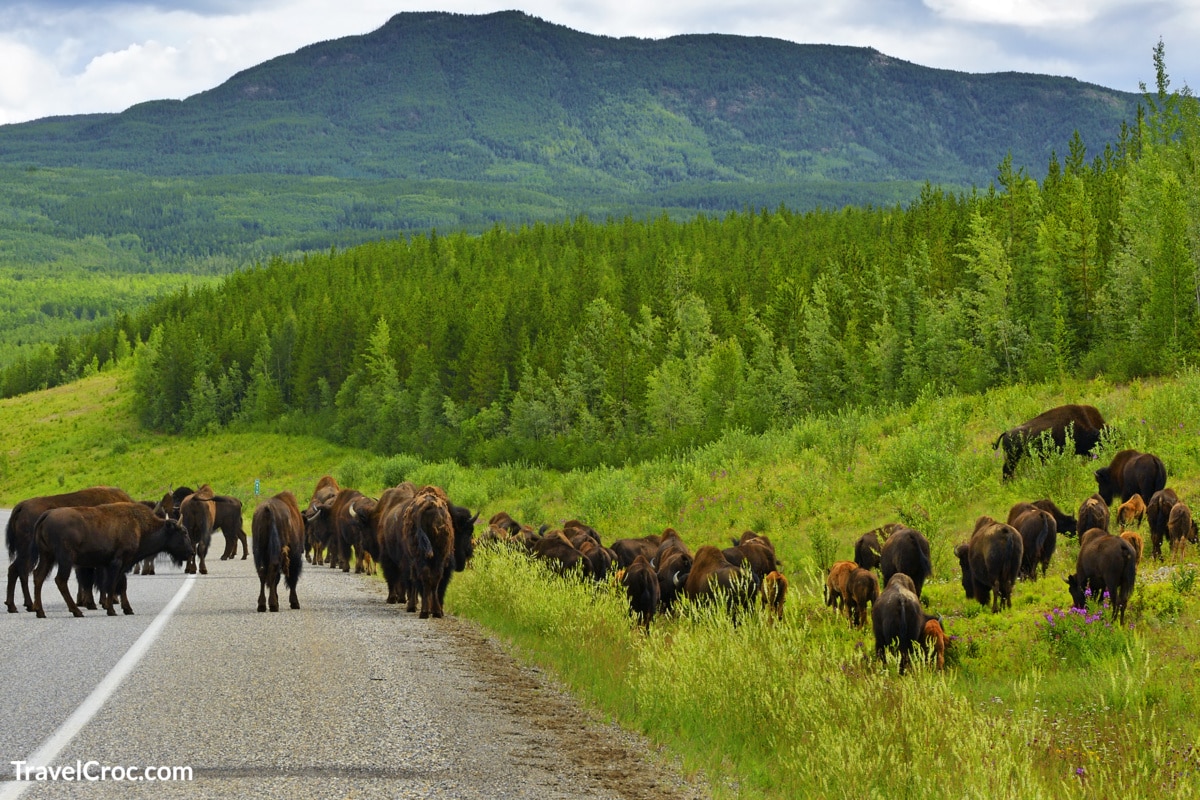
On this road trip, you get an amazing chance to see a wide range of wildlife and beautiful animals in their habitats, surrounded by nature. As I drove along the Alaska Highway I thought of it as one small ecosystem or a real zoo. From moose and wild sheep to bears, expect to see plenty of wild animals.
Make sure you keep your eyes open and always mind the speed. The latter is especially relevant when moose are round. Also, while you’re observing the animals on the sides of the road, you can let them be and don’t get very near them just for the sake of a good photo you can later boast with on social media. This can distress the animals and you may experience some trouble.
If you want to watch some bears, you can take Cassiar Highway. It’s definitely one of the places where you’ll see most of these furry creatures. They’re present even on other routes.
As a matter of fact, the Yukon Territory, British Columbia, and Alaska are popular bears’ dwellings. When you’re bear viewing, stay true to all recommendations and advice.
The situation can be especially delicate when you camp or when you’re hiking. Keep an eye out for any signs or postings that may warn you of bears or other wildlife.
Also, never leave food out in the open when you don’t actually eat it. You’ll be much safer if you keep it in your vehicle so that it doesn’t attract animals.
As I mentioned, moose are also commonly seen on road trips to Alaska. You can see them especially on the sides of the road on marshy and bushy terrain.
Lakes close to the roads are frequently visited by moose, too. Prepare to see moose when you’re driving through the Yukon Territory, the northern parts of British Columbia, and Alaska.
Another animal kind that may even sometimes block your road is the wild sheep. Besides wild sheep, you can see different birds in their colorful glory, as well as foxes, lynxes, and more. One thing is certain – if you are an animal fan, you won’t be disappointed.
On a side note, a variety of scenic destinations in Alaska offer the opportunity to view and admire animals. So, if you’re up for it, you can go to Homer or the Denali National Park where you can see caribou, grizzlies, Dall sheep, and more.
The word ‘Denali’ actually means ‘The Great One’ in the Athabascan language which is native there. You can even embark on an animal-seeing tour in Alaska, too.
What Should You Pack For Your Alaskan Road Trip?
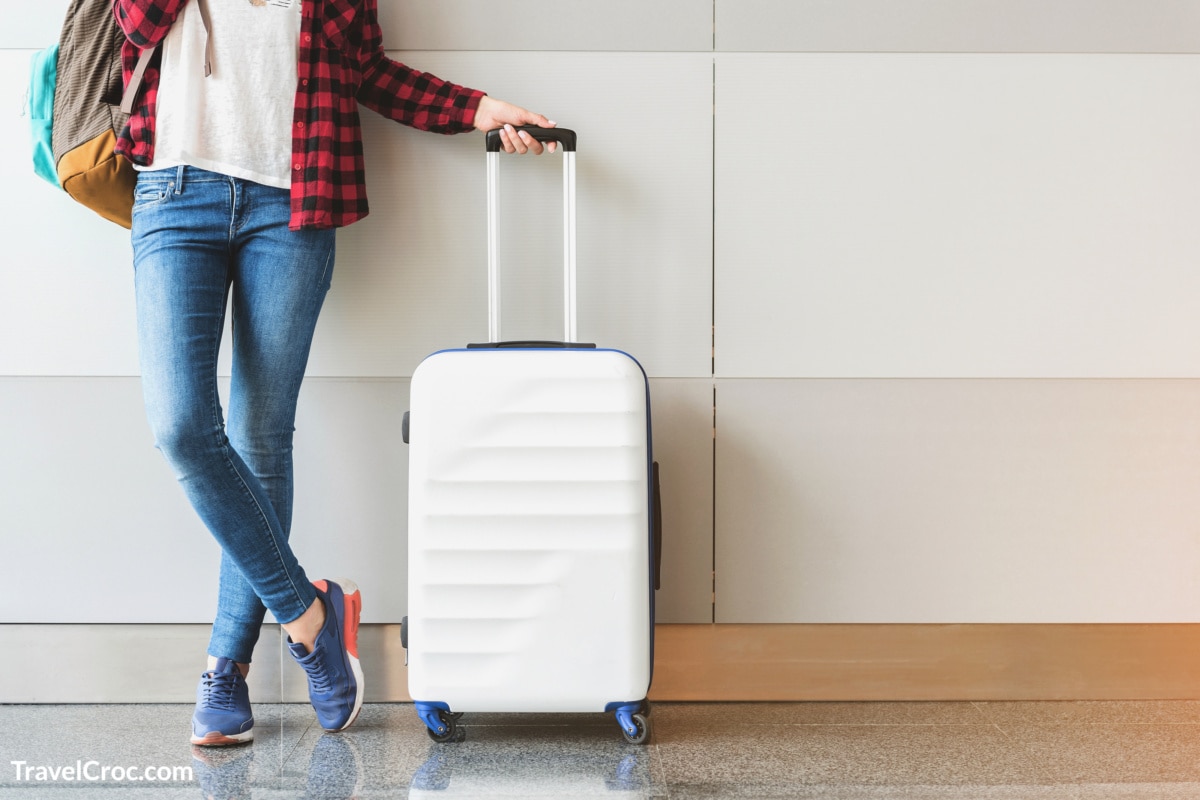
In the previous sections, I briefly mentioned the importance of taking some extra food and clothes on your road trip. In the following sentences, we’ll expand on that and list some other essentials for you to pack when traveling to Alaska.
To begin with, one of the first pieces of advice I got when I expressed my interest to travel to Alaska was to buy a guide and a map for the road. Yes, indeed, you may not have access to phone calls and the internet all the time, so it’s best to have it all outlined on paper in front of you.
It goes without saying that all the hygiene items and equipment are a must for a road trip such as this. Also, don’t forget to take your other personal items and medicine prescriptions as well as an over-the-counter medicine. Expect to find yourself in remote areas where finding a pharmacy may prove to be troublesome.
Make sure you stock up on food and water. There may be instances when you won’t be able to buy some on the road, so you can treat yourself with some from your own supplies.
During my road trip, I brought a cooler with me, as well. It turned out to be a fantastic idea as I always had some fresh food to eat. Since you can’t bring fresh produce to Canada from the States, remind yourself to make a stop at the first Canadian bigger town you come across since entering and buy whatever’s necessary.
Canada and Alaska are known for their changing weather – from stone cold to chilly to increasingly hot. So, pack plenty of different types of clothing to be prepared for all kinds of weather.
For your vehicle, you have to bring a spare tire as well as the right equipment for changing a tire if the need arises. It’s good to be prepared for the worst, so don’t take your chances by not bringing one.
Another pro tip is to have your vehicle’s manual by your hand. It should be in your glovebox. But if it isn’t, make sure you have a printed one ready.
Now it’s time for some pleasure. The next items you should pack are related to entertainment. Books. Audiobooks. Movies and TV shows. Podcasts.
And more. Just make sure they’re downloaded on your phone or tablet so that you don’t rely on a stable Internet connection to access them. The road can be long so it’s nice to be entertained and to have a chance to unwind and relax while it lasts.
From the category of unnecessary stuff that is completely worth it, I’d mention bringing an awning and a couple of camp chairs. You can always make a stop to relax from the driving, set up the awning and the chairs, and take in the beauty of nature surrounding you.
The awning will shield you from excessive sun and rain whereas the chairs are compact quick and easy to put in place.
Recommended Reading:
Which Route You Should Take to Reach Alaska
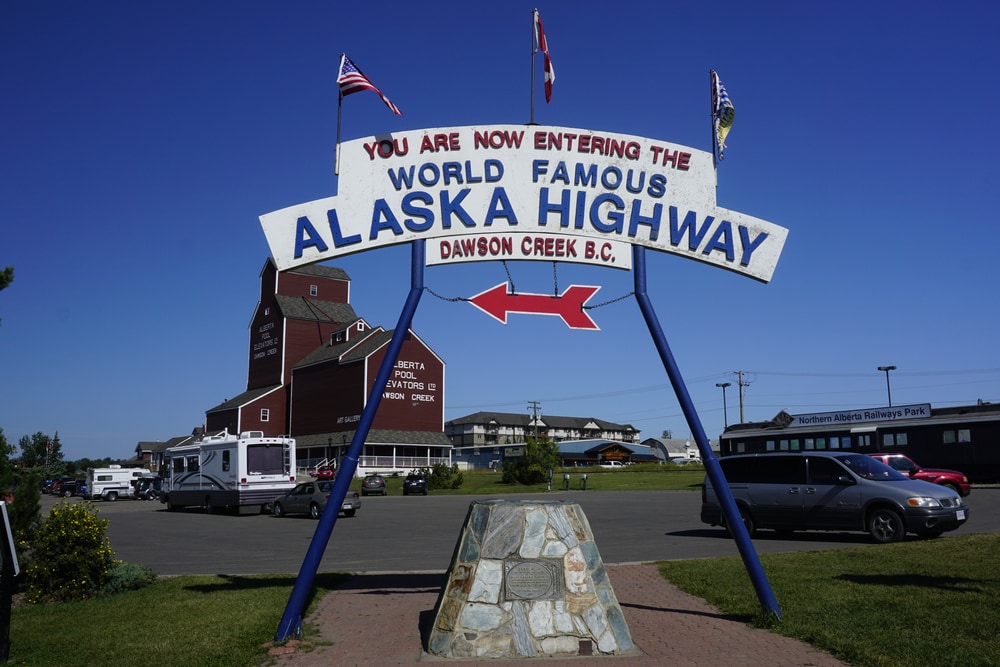
Iva photos / Shutterstock.com
Actually, to reach Alaska from the States, you should drive on one of the three main routes. All of them merge in Yukon, in the south of Canada, just near Watson Lake.
From there on, the way is the same for everyone that wants to drive to Alaska from the US. Just note that in case you drive to Alaska and back, it’s a nice idea one way to take Cassiar Highway and then go on the Canadian Rockies.
In the following paragraphs, I’ll lay out the three routes for you.
Driving on the West Route on Alaska Highway
Do you live on the West Coast? Then, this route is for you. I have a friend, who drove to Alaska on this road and she says that it’s a little less lonely than the Cassiar Highway that we’ll talk about further below.
Moreover, all you should do is follow the Trans Canada Highway to Cache Creek. Then, reach Prince George through Highway 97 and continue beyond the town on the same highway.
After a few miles, a sign should appear stating that there is the beginning of the Alaska Highway. At this point, you can shorten the drive by cutting off the road and saving 25 miles in the process.
Or you can keep on driving through Dawson Creek and officially get to the Alaska Highway.
Driving on Cassiar Highway
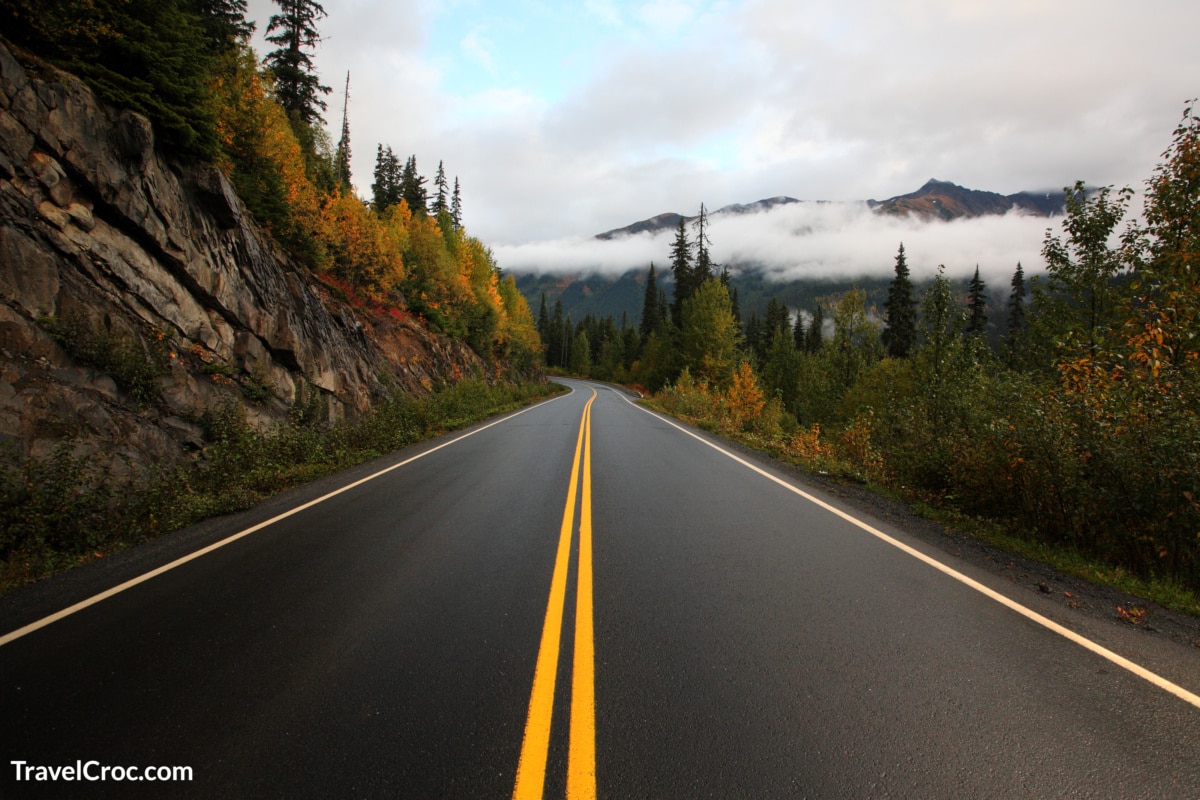
When compared to the previous route, this one is shorter for around 100 miles. This makes it the shortest one if you want to drive from Seattle to Alaska. However, at the same time, many people argue that it’s the slowest one. Why is that?
For one, the Cassiar Highway is known to be very lonely and remote with not many things around. Therefore, the drive is slower than on the other roads.
Having this in mind, the highway is suitable for those that want to have a relaxing drive and forget about all troubles for a while. A plus for me was that I got to see some amazing wildlife while driving.
Just note that the areas you’ll pass are quite remote, so you should be willing to drive without cell service and Internet during certain points.
In terms of directions, you should follow the Trans Canada Highway otherwise known as Highway 1 from Seattle to Cache Creek. Along the way, you should drive around Vancouver on the east side.
Then, you should continue on Highway 97 and drive to Prince George. Once you’re in this town, locate the Yellowhead Highway and drive on it. It’ll lead you on the west side to Prince Rupert.
At this point, you’ll be close to the Cassiar Highway, which starts as Highway 37 on the north just between Terrace and Smithers. Reach it and then you can truly relax on your drive as that part of the country is truly wonderful. I really enjoyed the peaceful drive among the wilderness. It was like it came out of a movie.
Eventually, you’ll get straight on the Alaska Highway immediately after the border leading into Yukon. This point is located west of Watson Lake.
Driving East on Alaska Highway Through Calgary or the Canadian Rockies
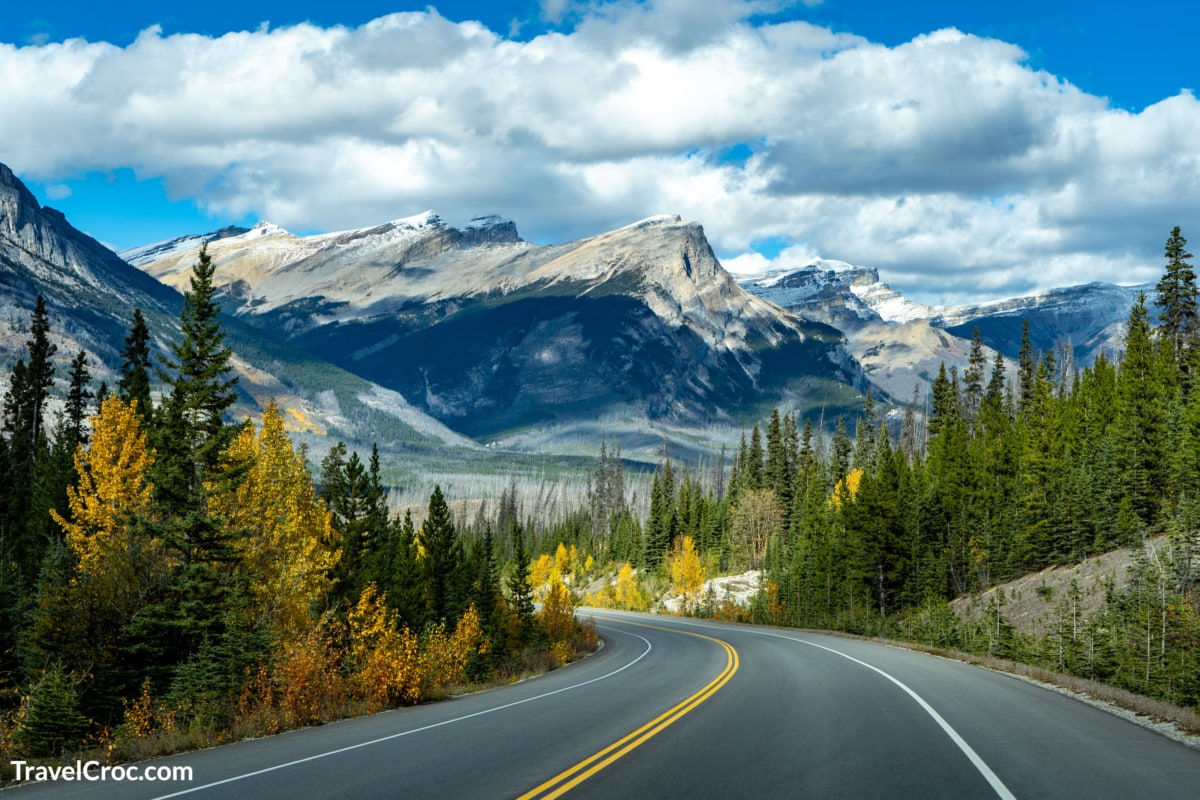
The third route for your drive from the US to Alaska passes through Calgary or the Canadian Rockies. So, it’s the most suitable for those that come from the Midwest, Rocky Mountain West, the East, or South Coast.
If you drive on this route, the quickest way to reach Alaska is to get to Calgary first and afterward head to the Red Deer Expressway. It’s on the north side of the Canadian Rockies National Parks.
Stay on this road and you’ll join the Alaska Highway in British Columbia, Dawson Creek, to be more precise.
However, a lot of people want to visit some more national parks during their drive from the US to Alaska such as the Glacier National Park as well as the parks Jasper and Banff.
Just have in mind that these are not really along the way for those driving from the West Coast while those that come from the other parts of the United States will find them nearer to their intended route to Alaska.
In case you want to visit these parks, too, I encourage you to do so. And then continue north to Grand Prairie through Jasper and reach the beginning of the Alaska Highway in British Columbia.
Driving on Alaska Highway to Tok through the Yukon Territory
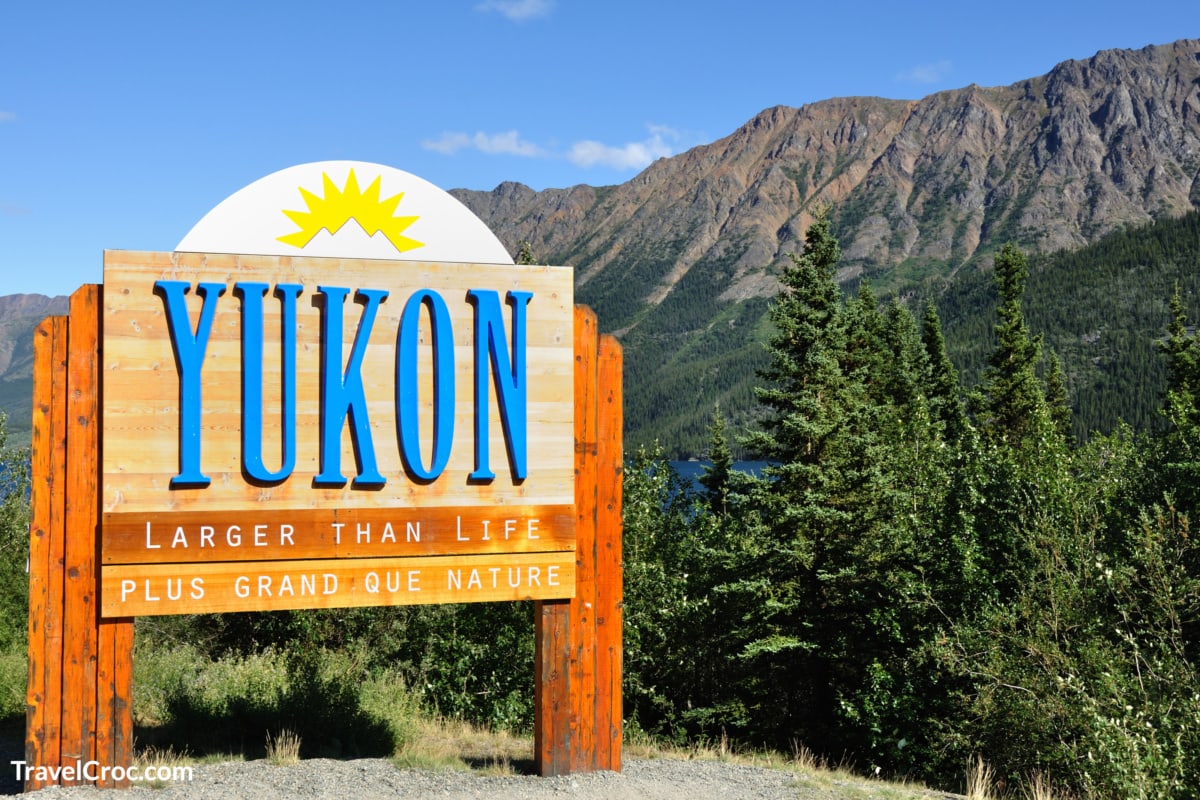
Things get way easier once you reach the Alaska Highway. Basically, once you are on the highway, you continue straight ahead without the need to make additional turns.
Of course, if you want to visit some place along the way like Dawson Creek, for instance, you can definitely take a slight turn. But note that this will extend the duration of your overall trip.
To get to Tok, this route will take you to Yukon Territory’s southern side. I really liked this part, especially because you get to see Whitehorse and similar amazing places.
On the other hand, if your target is either Fairbanks or Anchorage, you’ll see signs to make appropriate turns while you are on the Alaska Highway. More precisely, you’ll pass the Kluane National Park and then arrive in Alaska through Beaver Creek.
Recommended Reading:
What Are The Top Things To Do And See While Driving From The US To Alaska?
Visit Banff National Park
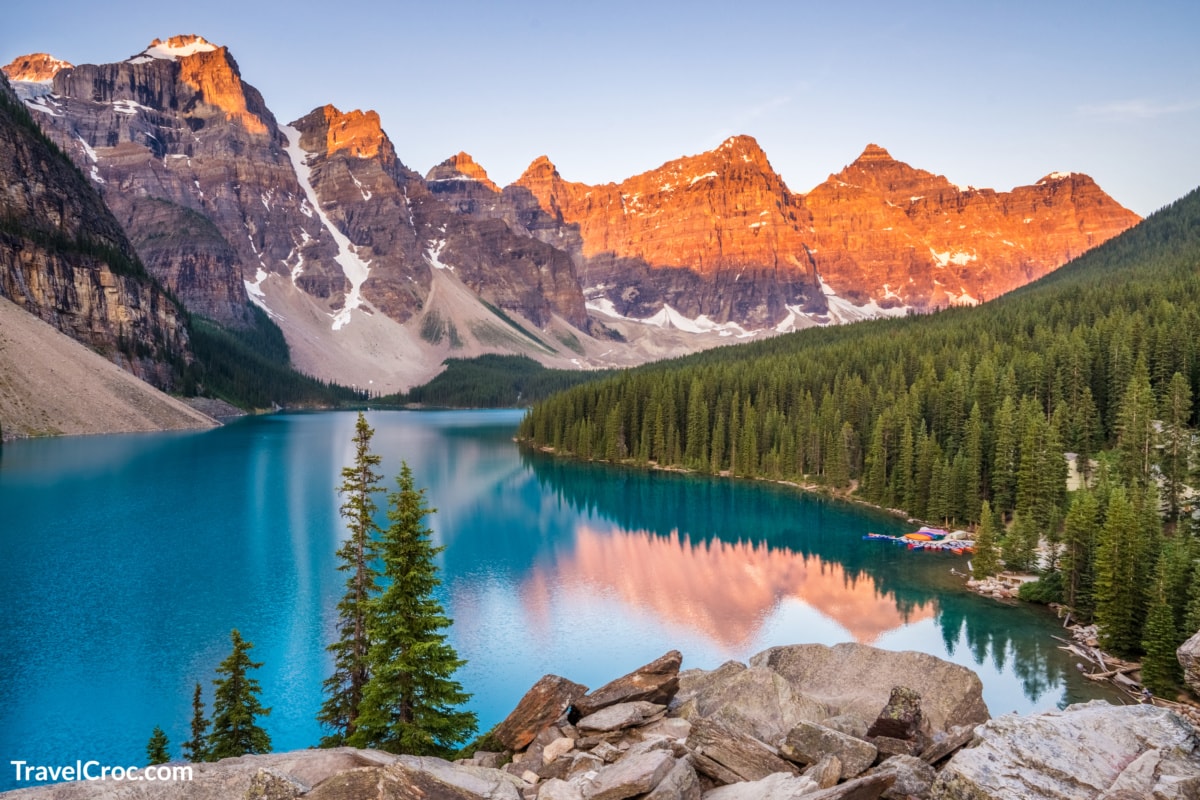
This is definitely one of the most magical places you’ll encounter on the journey. Banff is filled with natural beauties all around, so to see everything it has to offer, I recommend staying there for two or three days.
Camping is a great option for this as it’ll enable you to be close to the wilderness while at the same time taking a break from everyday life. The stay at the park came at a time when I really needed a break, so I fully embraced it and enjoyed my time there.
I was happy that there were forests and lakes to explore and take beautiful photographs of. More precisely, you shouldn’t miss the Lake Louise, Moraine Lake, Bow Lake, and Peyto Lake. Also, the park Jasper is nearby, so if you have time, I encourage you to see that one, too.
The two parks are connected through the Icefields Parkway, making them more accessible by vehicles. Those that ski can do so in the special area meant for this purpose. Just keep an eye on how cold the weather is.
These are only some of the activities that you can try at the park. And if you don’t have a lot of time to stay there, you can book a helicopter tour of the park. It’ll enable you to see it from a completely different perspective.
Explore Jasper National Park
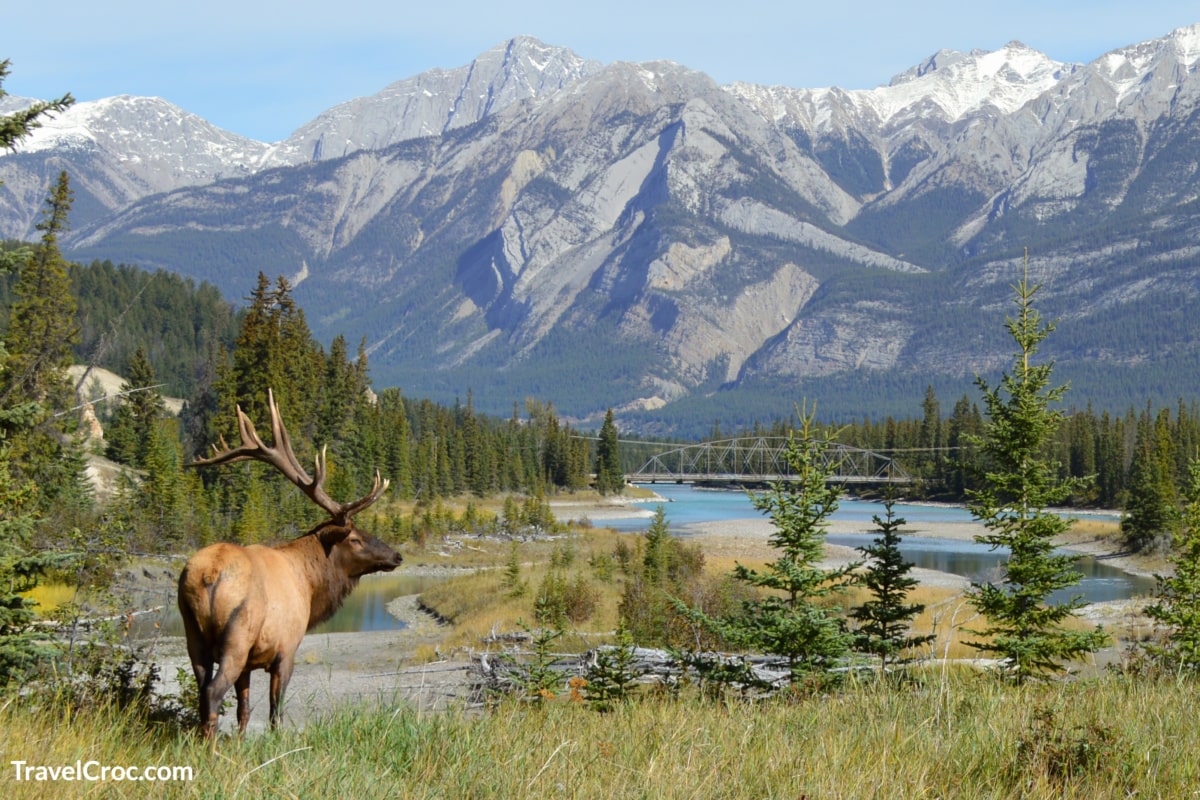
As I mentioned Jasper National Park is close to the previous one. It, too, provides many interesting opportunities for exploring nature and its beauties.
For starters, it has many rivers, glacial lakes as well as glorious mountains. Moreover, the Pyramid Mountain and the hike on the Valley of five lakes are things you should totally try.
Plan at least a day there before continuing up in Alberta to reach Dawson Creek and the Alaska Highway.
Drive on Icefields Parkway
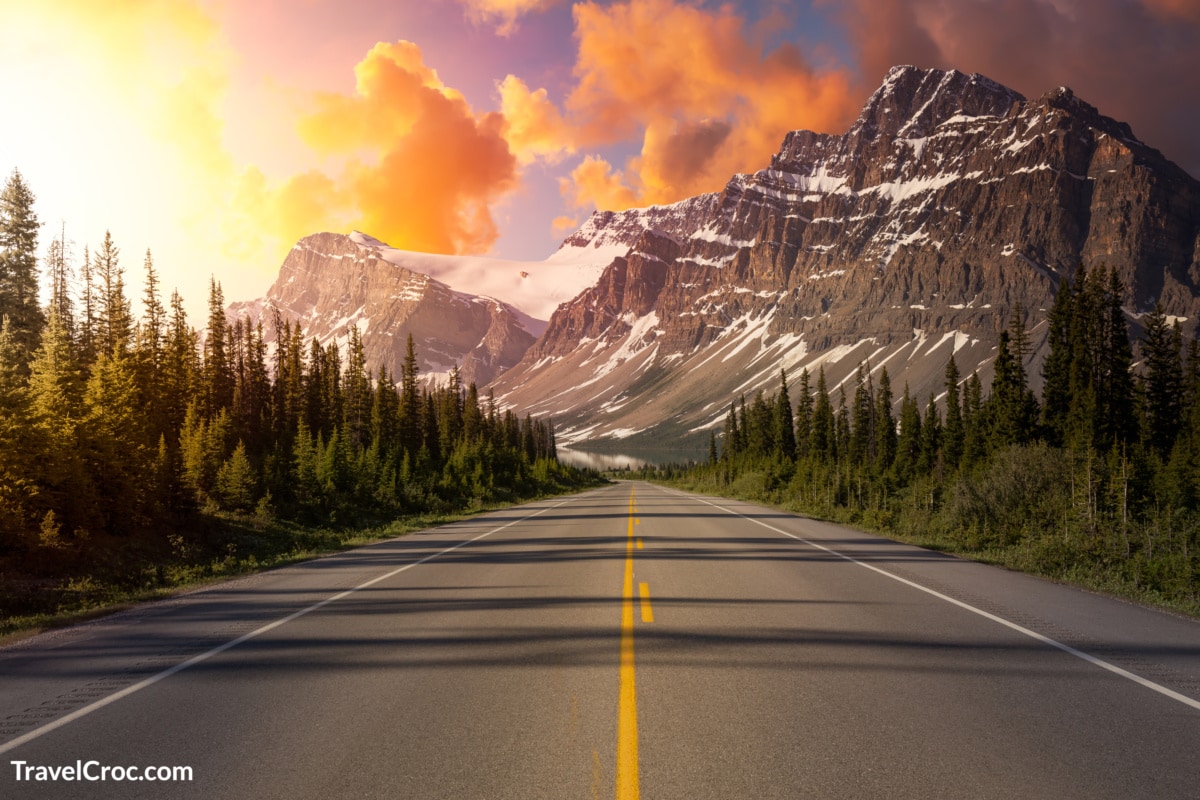
The drive on Icefields Parkway is among the most picturesque drives I have ever experienced. It’s only 144 miles long but that’s more than enough to enjoy the numerous stops and the wonderful surroundings.
The fact that it connects the two national parks makes it even more exciting. Not to mention that you can pass it in around two hours, so it isn’t a long detour.
In case you have more time, though, it’s a nice idea to visit the Columbia Icefield and go on a pleasant walk in this interesting place.
Hop on the Hell’s Gate Tram
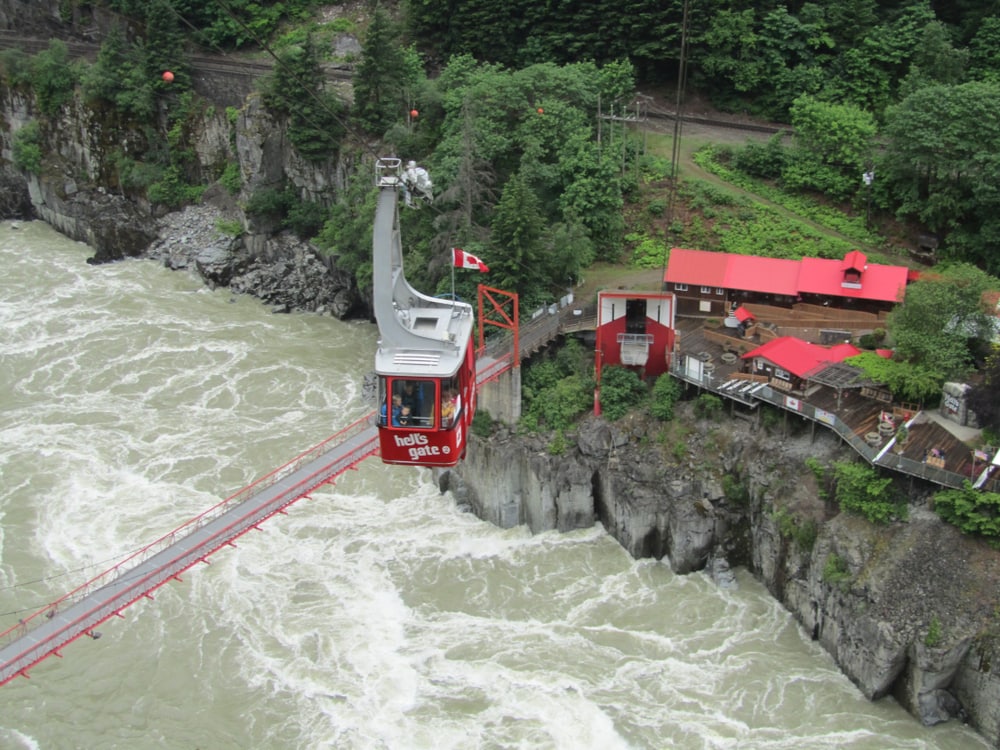
been.there.recently / Shutterstock.com
Located on the Trans Canada Highway in the Fraser Canyon, this is a unique place that you can visit on your way to Alaska. This whole area is really interesting as you pass through the narrow canyon surrounded by rocks and forests.
I really enjoyed getting out of the car to get on the tram. It really gives you an opportunity to view the wonderful nature from above. Still, even if you can’t stop to do this, the drive itself is very enjoyable.
Taste Wine in British Columbia
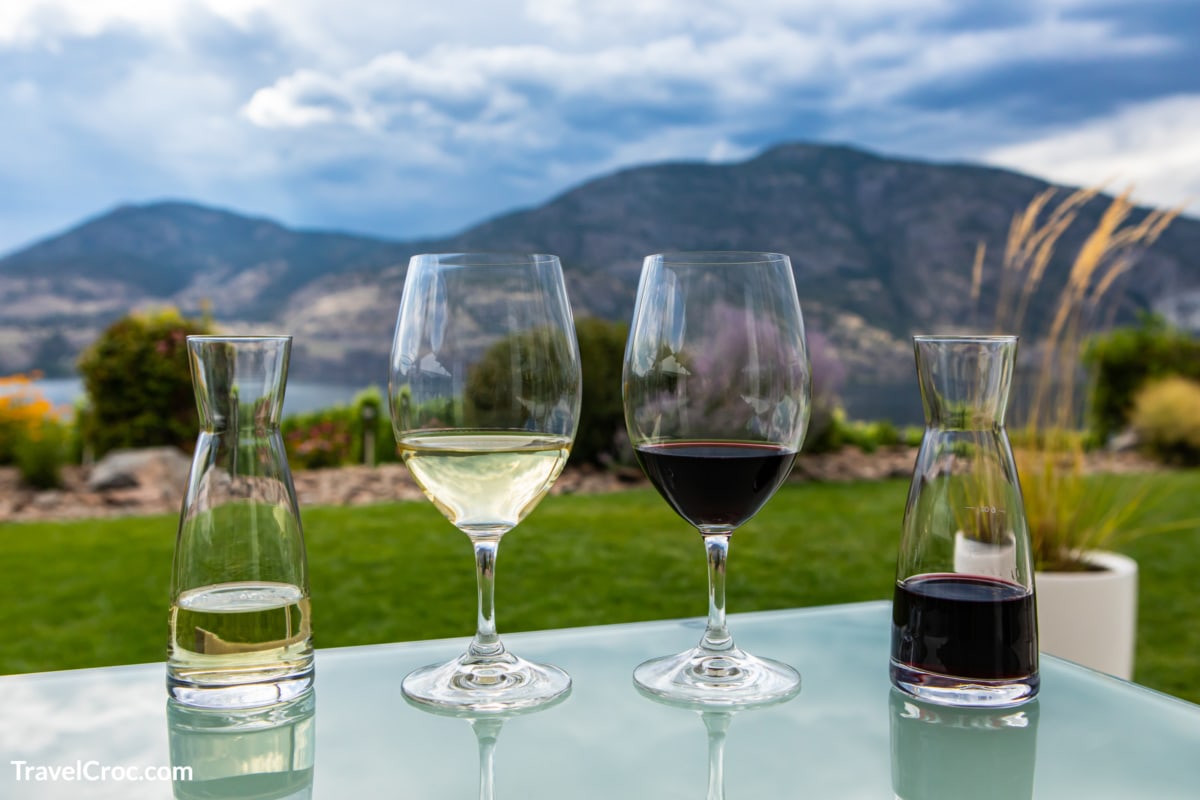
Did you know that British Columbia is well-known for its delicious wines in the numerous wineries? I was amazed to discover this. Believe me, it’s a must to try them out while driving in this part of Canada.
No matter which winery you choose, you’ll surely have a great time, taking a break from the driving. Most of them have outdoor areas for tasting the wines and some of them offer meals, as well.
Aside from this, have in mind that the British Columbian towns have farmer’s markets with many local products. I recommend visiting one, especially during the weekend. At this time, you can also organize a picnic and try some wine surrounded by peace and nature.
Discover the Liard River Hot Springs
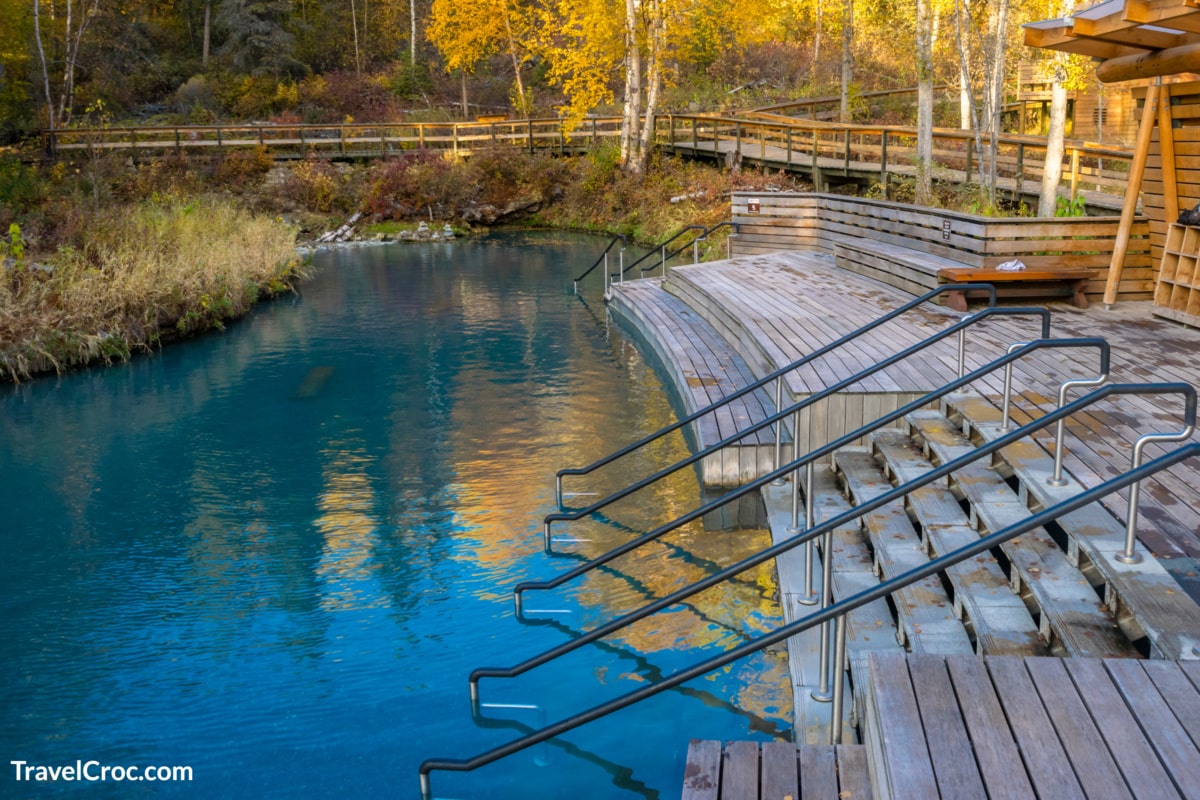
Lovers of hot springs this place is for you. I consider myself in this group of people, too. That’s why when I heard about the Liard River Hot Springs, located between Watson and Muncho Lake, I had to stop driving and visit them.
Basically, they are inside the Liard River Hot Springs Provincial Park and offer many interesting things to see and do. Apart from the obvious chance to dip inside the hot water and relax, you can stay the night to enjoy even more soaking activities with the moon above you.
Thanks to the camping spots and the roadhouses, I easily found a place to stay.
What’s exciting is that the place is filled with special plants that live despite the harsh weather.
The hot water helps them with this. Also, this park is a sanctuary for moose, so maybe you’ll spot some while staying there.
Recommended Reading:
A Final Word About Can You Drive To Alaska From The US
All things considered, the answer to the question ‘Can you drive to Alaska from the US’ is simple. Yes, of course, you can. But you should be prepared for the long drive and have all the needed information in your head.
We hope we helped you obtain those in this post. Starting from the worth of the trip, the necessity to pass through Canada, and the requirements of that country to the camping opportunities, the wildlife you’ll see along the way as well as the things you can see and do, we covered the key details you need.
Finally, don’t forget that the drive from the US to Alaska can last for as much as a week or maybe more if you make more stops. So, it’s recommended to bring spare clothes, food, drinks, and tires and other winter equipment for your vehicle.
Since the conditions on the road can vary, it’s better to be prepared than worry about something unexpected happening to you.
In the meantime, while you’re planning your trip to Alaska be sure to check more amazing travel destinations on our website travelcroc.com thank you for reading.

